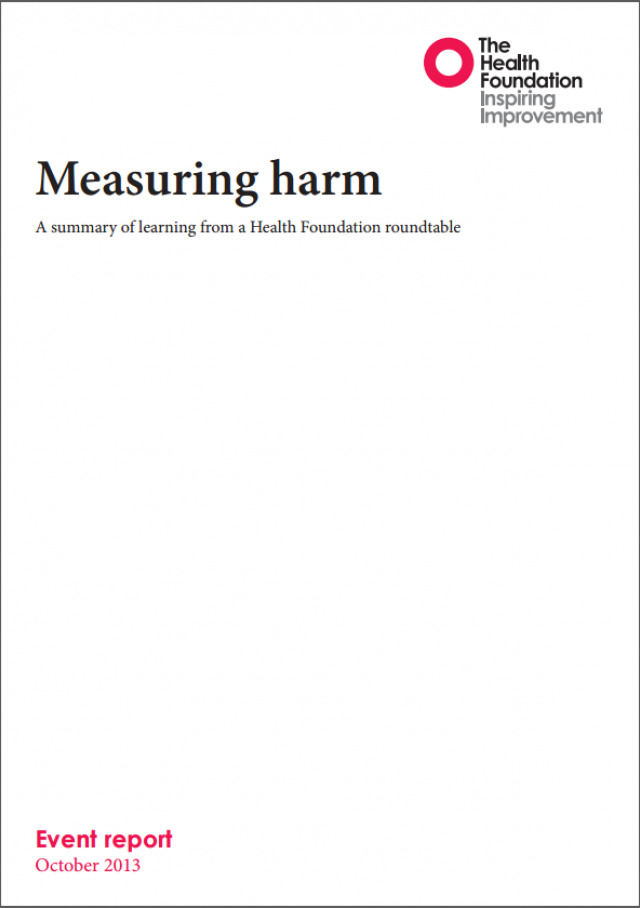Measuring harm A summary of learning from a Health Foundation roundtable
October 2013

Key points
- The primary purpose of measurement is to drive improvement; in other words, it is a means to an end and not an end in itself. Secondary uses of measurement are to maintain a cultural surveillance on what we are doing, and to provide accountability to external bodies.
- Using measurement for comparison can be valuable in engaging people at all levels in the subject, but this must be done with caution. The publication of comparative data must be accompanied by analysis and explanation to help attach meaning to the information.
- Measurement is most effective when people are inspired rather than mandated to do it; when there is guidance, resource and support from the leaders of organisations to undertake it; and when frontline staff understand how it will directly lead to improving quality and safety.
- Efforts to measure and tackle specific harms like MRSA are rightly celebrated, but not enough is being done to fully understand and attribute the reasons for their success.
- Constructive debate around the use of measurement has often been replaced by judgement and misinformation around contentious subjects such as the use of mortality statistics.
In 2013, the Health Foundation hosted a roundtable event to reflect on the successes and limitations of current approaches to measuring harm.
Experts from the fields of academia, public policy, regulation and improvement came together to share their knowledge and experience and to consider a more comprehensive approach to measuring harms in healthcare, as proposed by Charles Vincent and colleagues in The measurement and monitoring of safety.
The group also suggested a range of actions to improve understanding of, and approach to, the measurement of harm.
- Boards must use safety information to determine their priorities locally rather than solely responding to an agenda set nationally.
- Organisations publishing performance data need to provide context and explanations so that the public, and the media, engage constructively in the debate around safety.
- Professional bodies need to embed measurement for quality improvement as a key part of professionalism.
- Patient groups should provide guidance that enables people to use data to support decisions about their care.
Work with us
We look for talented and passionate individuals as everyone at the Health Foundation has an important role to play.
View current vacanciesThe Q community
Q is an initiative connecting people with improvement expertise across the UK.
Find out more

